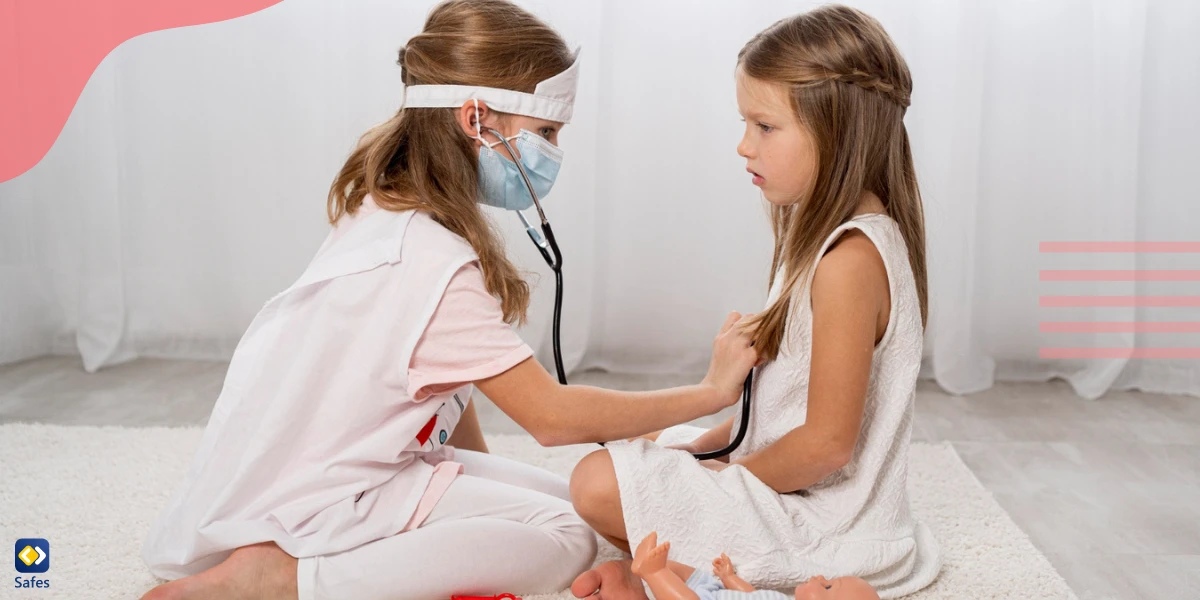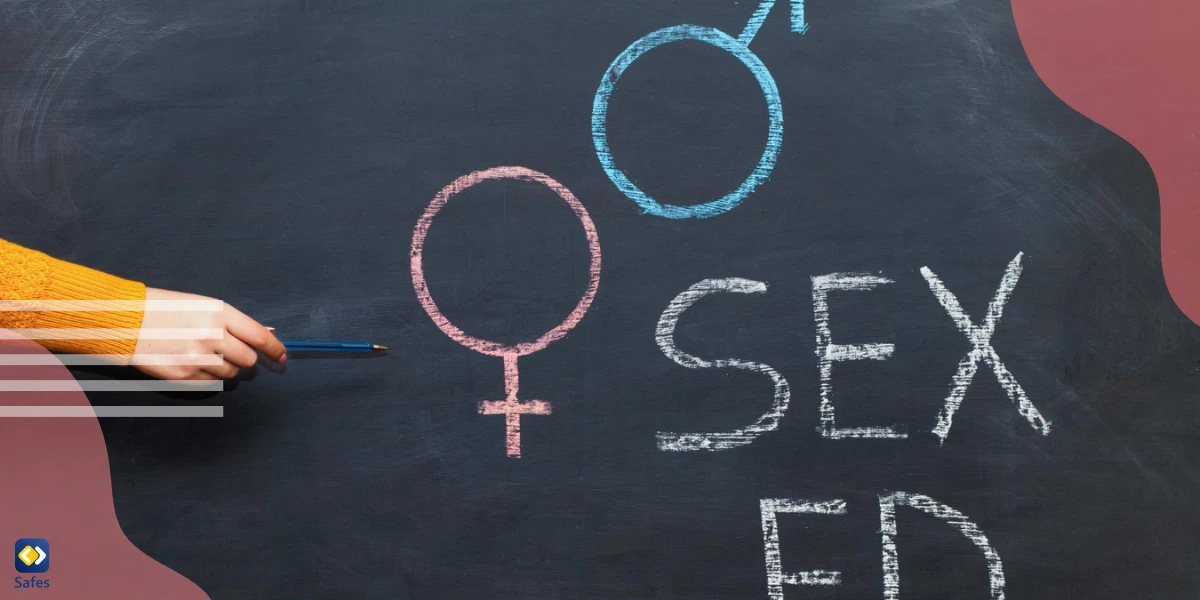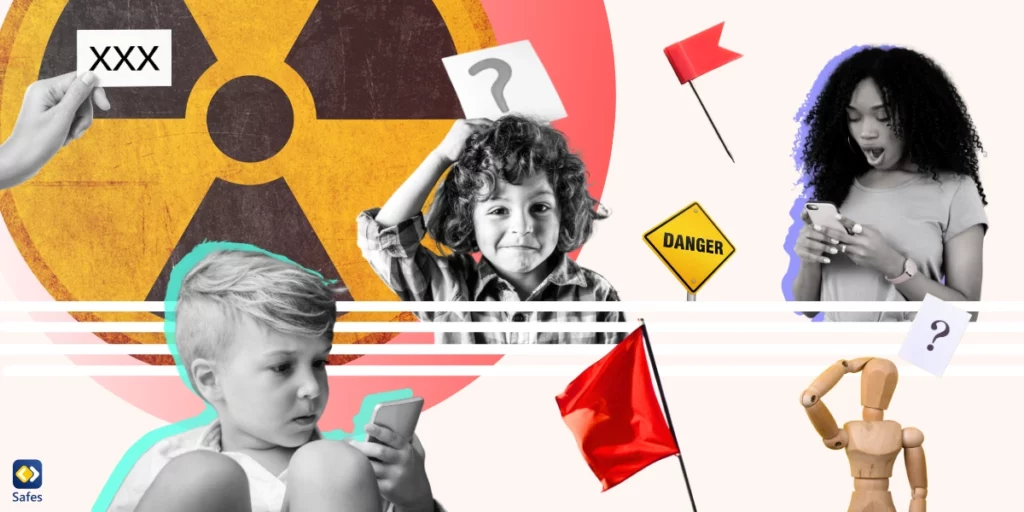Sexual curiosity and exploration are normal in the cycle of a child’s development. However, when sexual behaviors take an abnormal pattern, it’s referred to as sexual maladaptive behavior. This kind of behavior can be both a telltale sign and the cause of many problems in a child’s life and well-being. That’s why it’s important for parents to identify the signs of sexual maladaptive behavior in children and understand what it entails. In this blog post, we will try to shed light on the definition of sexual maladaptive behavior and offer tips on how parents can help their children steer clear of its harms.
Download and Start Your Free Trial of the Safes Parental Control App
Understanding Sexually Maladaptive Behavior
Sexually maladaptive behavior refers to sexual behaviors exhibited by children that go beyond their developmental stage. These behaviors are problematic and pose risks to their well-being. Let us illustrate the concept with an example: We’ve all heard about “playing doctor.” This game doesn’t necessarily imply sexually maladaptive behavior in a child, because children are curious about their sexuality. However, if there’s a considerable age difference between the players, this can cause problems and indicate the existence of sexually maladaptive behavior.
Since there’s a fine line between inappropriate sexual behaviors and common childhood curiosity, it’s important to recognize myths from facts. A sexual act is often called maladaptive when it violates common social norms. Also, many people believe that these behaviors will naturally resolve over time, which is a misconception. Recognition and timely intervention are essential in addressing this issue in children. But first, we must know the factors that contribute to the development of such behaviors.

Recognizing Signs of Sexually Maladaptive Behavior
The signs of sexual maladaptive behavior can manifest in a number of ways. Behavioral indicators include disregard for rules and authority, hiding pornography, and displaying inappropriate sexual behaviors, such as public exposure or engaging in sexual acts with others. There might also be some evident signs in their emotional state, such as aggression or lack of social skills. The signs of sexually maladaptive behavior can also extend to relationships and interactions. These red flags include coercive behaviors, sexual bullying of other children, and pressuring them to engage in sexual acts with them.
Potential Causes and Risk Factors
The reason why children develop sexual maladaptive behavior differs from one person to another. Sometimes, children try to imitate what adults do when they’re exposed to sexual content from an early age. Media and online platforms are filled with sexually charged content these days. Children don’t have the mental capacity to process these kinds of content; thus, they will think that this behavior is normal.
Additionally, trauma and adverse childhood experiences have been linked to the development of maladaptive sexual behavior. For instance, girls who have been abused at an early age have been showing patterns of sexually maladaptive behavior in their childhood.
Lastly, lack of parental supervision and boundaries can contribute to the development of sexually maladaptive behavior. There should be clear rules about which behavior is acceptable and which is not. And these guidelines should be communicated to children regularly.
Parental Role and Support
Parents play a crucial role in preventing and addressing sexually maladaptive behavior in their children. Creating a safe and open environment for communication is essential, as it allows children to discuss their questions and concerns about sexuality freely. Parents should strive to establish trust and maintain open lines of communication with their children by providing age-appropriate information about sexuality and addressing any misconceptions or misunderstandings their children may have.
Encouraging healthy sexual development and education is also important. This includes teaching children about consent, appropriate boundaries, and respecting the autonomy and bodily integrity of themselves and others. In cases where sexually maladaptive behavior is persistent, seeking professional help and guidance is vital. A trained professional can provide assessment, evaluation, and appropriate interventions.
In this day and time, many symptoms of sexually maladaptive behavior are hidden in children’s online activities. It can be a sexually explicit comment or visiting adult websites. Safes parental control app helps parents monitor and prevent such behaviors by limiting access to explicit content and providing comprehensive supervision of their online activities. Safes can be installed on all devices, such as iOS, Android, Windows, and more. Explore Safes today with our 14-day free trial—no payment information needed!
Intervention and Treatment Options
Diagnosing sexually maladaptive behavior seems pretty simple at first sight. You see your child touch their genitals once and you instantly suppose that they have a disorder. However, uncertified individuals shouldn’t be making assumptions without consulting a professional and getting their child assessed by them. Once this condition is diagnosed, the doctor will design a treatment plan that could be a mixture of medications and therapy. Of course, this doesn’t mean that parents will have to stay passive. Parental intervention is of utmost importance in the journey towards recovery. By collaborating with schools, counselors, and support networks, parents can take an active role in helping their children overcome this challenge.

Preventive Measures and Education
We talked about the importance of parental role in recovery, but parents have a far greater role in preventing this issue. It starts with the proper education. Parents need to teach their children about healthy sexuality and the concept of consent. Children need to know that people have to ask before touching them, and that they need to do the same.
Also, a little bit of a firm hand can’t be all bad. Rules should be discussed with children and so should the consequences of disobeying these rules. It’s not about being cruel or overly strict, it’s about children learning to respect certain boundaries.
To take an even more active role in preventing sexually maladaptive behavior in children, parents need to teach their children about online safety and responsible behavior. Not only will this limit exposure to explicit content, but it will also teach them to respect other people’s boundaries even when they’re online.
Conclusion
Addressing sexually maladaptive behavior in children requires proactive engagement and seeking help from professionals and support networks. By understanding the signs, causes, and risk factors associated with these behaviors, parents and caregivers can play a crucial role in prevention and intervention. Ongoing support, open communication, and continuous education about healthy sexuality are key. It is essential to create a safe environment where children feel comfortable discussing their questions and concerns. By taking these steps, we can ensure the well-being and healthy development of our children, promoting a society that fosters healthy attitudes towards sexuality and relationships.
Your Child’s Online Safety Starts Here
Every parent today needs a solution to manage screen time and keep their child safe online.
Without the right tools, digital risks and excessive screen time can impact children's well-being. Safes helps parents set healthy boundaries, monitor activity, and protect kids from online dangers—all with an easy-to-use app.
Take control of your child’s digital world. Learn more about Safes or download the app to start your free trial today!




